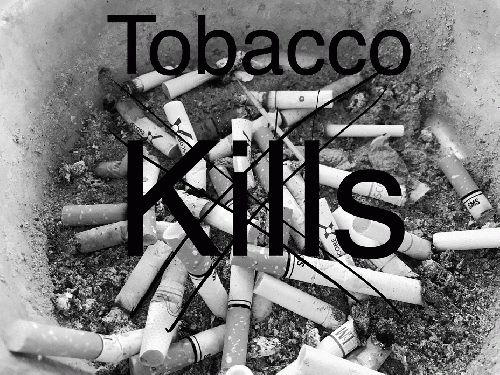Despite the indisputable scientific evidence that tobacco kills, the tobacco industry has been conniving to use every trick possible to protect and increase its profits. Over 8 million people die of tobacco use worldwide every year. More worrying is the emerging scientific evidence that diseases of which tobacco is a common major risk factor, are dangerously elevating the risk of serious outcomes of COVID-19 (including death). One glimmer of hope in these difficult times, of public health emergency and cascading humanitarian and economic crisis, comes from Singapore: plain packaging of all tobacco products comes into immediate effect from 1st July 2020.
Singaporean Ministry of Health says that plain packaging (or standardized packaging) of "tobacco products is part of a multipronged approach aimed, among others, at discouraging non-smokers from picking up smoking, encouraging smokers to quit, and encouraging Singaporeans to adopt a tobacco-free lifestyle, which will ultimately lead to reduced smoking prevalence."
plain packaging punctures deception tactics
According to the World Health Organization (WHO) and the global tobacco treaty (WHO Framework Convention on Tobacco Control), plain packaging means restricting or prohibiting the use of logos, colours, brand images or promotional information on packaging other than brand names and product names displayed in a standard colour and font style. It also implies use of black and white or two other contrasting colours, as prescribed by national authorities; nothing other than a brand name, a product name and/or manufacturer's name, contact details and the quantity of product in the packaging, without any logos or other features apart from health warnings, tax stamps and other government-mandated information or markings; and standardized shape, size and materials. No advertising or promotion inside or attached to the package or on individual cigarettes or other tobacco products is allowed.
It is common knowledge how tobacco industry has used deception, lies and misleading branding, marketing, sponsorship, advertising and promotion (despite ban on advertising) to hook new children and young people into addiction so that its cash registers keep ringing (while millions keep dying from its products every year). Plain packaging transfers much more power to the government to control a deadly product, punctures the deception and lies of industry age-old tactics, and helps save lives and avoid unnecessary human suffering.
why is plain packaging important?
Plain packaging serves several purposes, including reducing the
attractiveness of tobacco products; eliminating the effects of tobacco
packaging as a form of advertising and promotion; addressing package design
techniques that may suggest that some products are less harmful than others;
and increasing the noticeability and effectiveness of health warnings.
Noted tobacco control and health advocate Dr Tara Singh Bam, who is the Deputy
Director for the Asia Pacific region, International Union Against Tuberculosis
and Lung Disease (The Union), welcomed the implementation of plain packaging in
Singapore and "commends all the measures that Singapore has already taken
in tobacco control. Plain packaging reduces the attractiveness and appeal of
tobacco products to consumers, increases the noticeability and effectiveness of
health warnings, and reduces the ability of the tobacco product and its
packaging to mislead consumers about the harms of smoking."
Mayor Bima Arya of Bogor City, Indonesia, who is also Co-chair of the Asia
Pacific Cities Alliance for Tobacco Control and NCDs Prevention (APCAT),
congratulated Singapore on this proactive step to save lives from tobacco-related
diseases, for its leadership in the region, and for its commitment to becoming
a tobacco-free country.
According to data from the Singapore Ministry of Health, smoking prevalence in
2019 was 10.6 percent. Although this number is relatively low compared with
other countries in the region, smoking is the country's second highest
contributor to diseases such as heart attacks, stroke, cancer and chronic
obstructive pulmonary disease, and killed an estimated 2,073 people in 2016.
Furthermore, smoking directly costs Singapore at least US $600 million a year
in healthcare costs and lost productivity.
From 1 July 2020, non-compliance with the plain packaging (or standardized
packaging) regulations in Singapore will be an offence punishable with a fine
not exceeding $10,000, imprisonment for a term of up to six months, or both for
first offenders. Those with a prior qualifying conviction will face heavier
penalties. The range of other tobacco control measures include public
education, taxation, smoking cessation programmes, bans on tobacco advertising,
the point-of-sale display ban and the institution of a minimum legal age for
tobacco has already been in force in Singapore.
(Note: You can view every article as one long page if you sign up as an Advocate Member, or higher).






